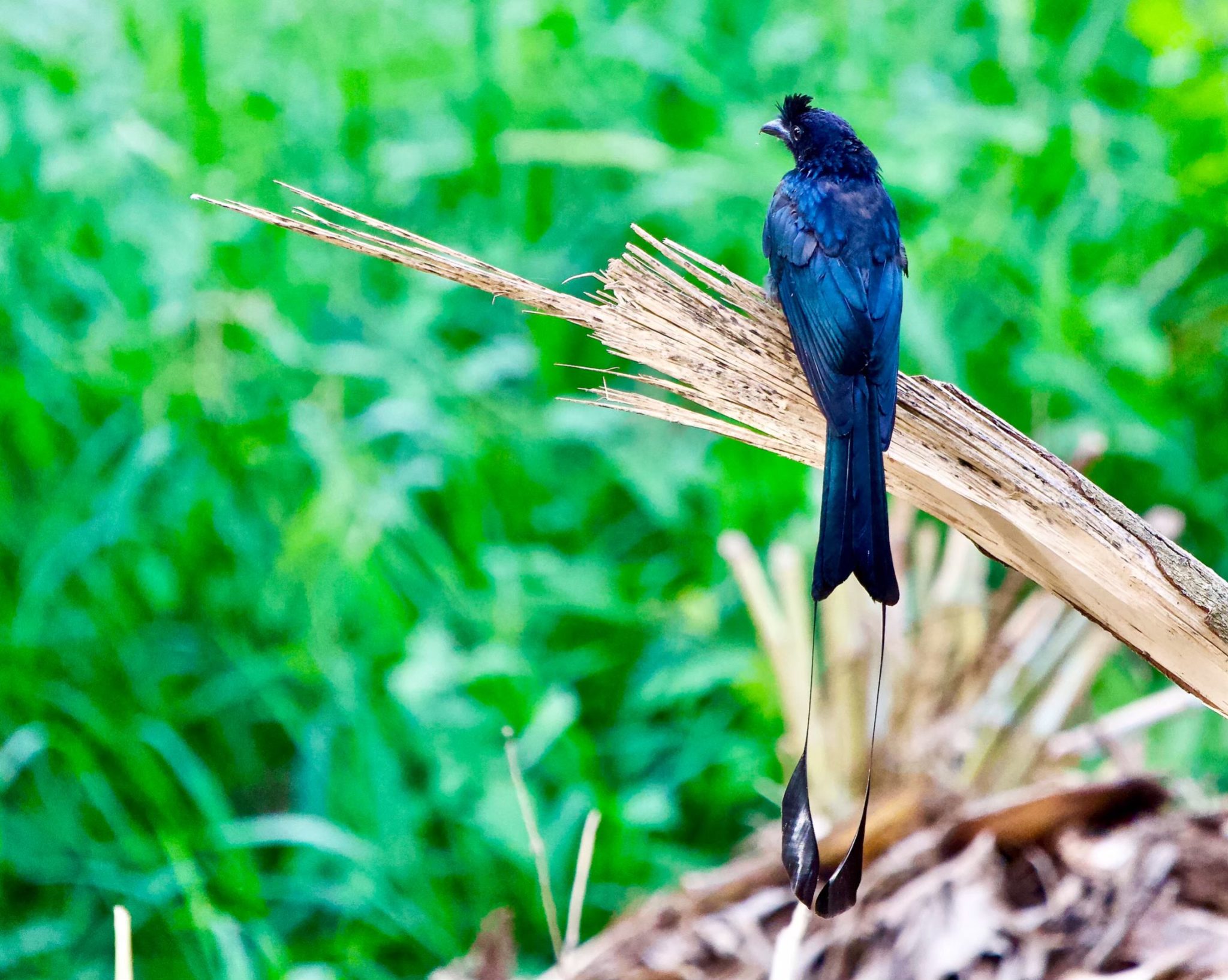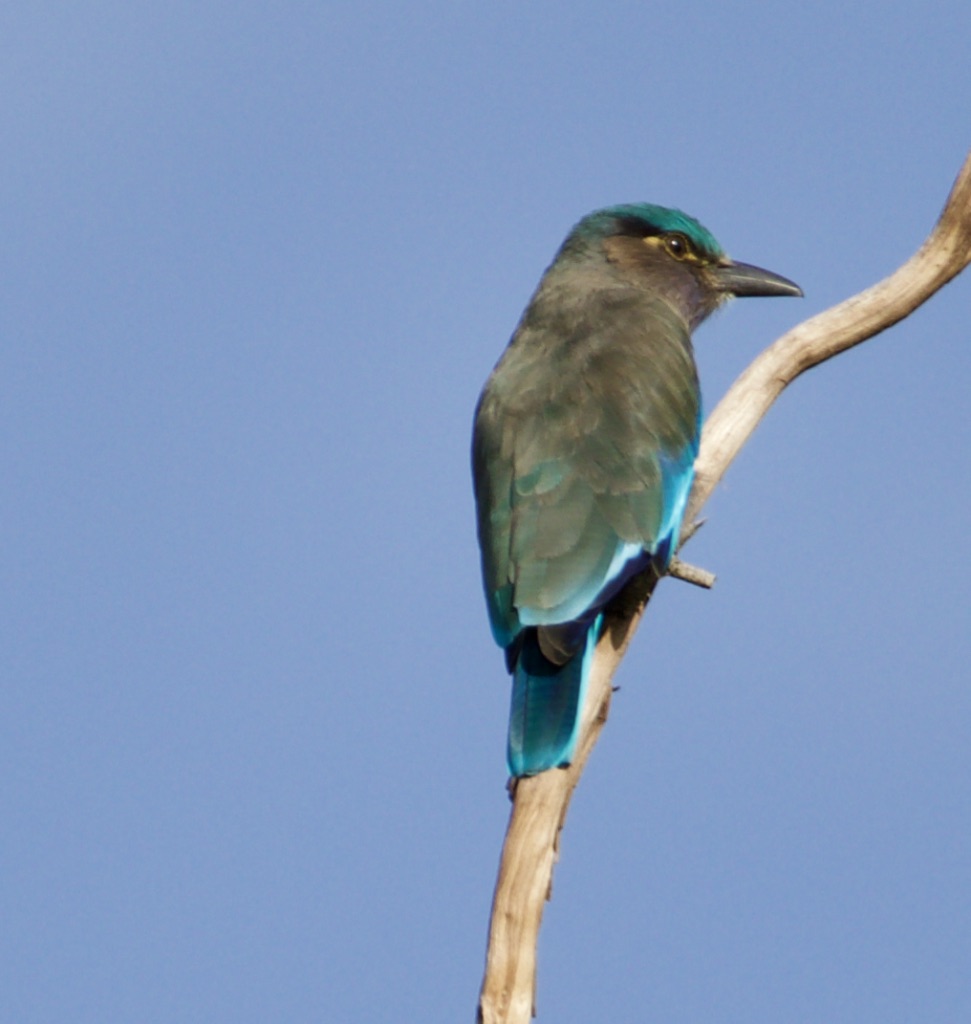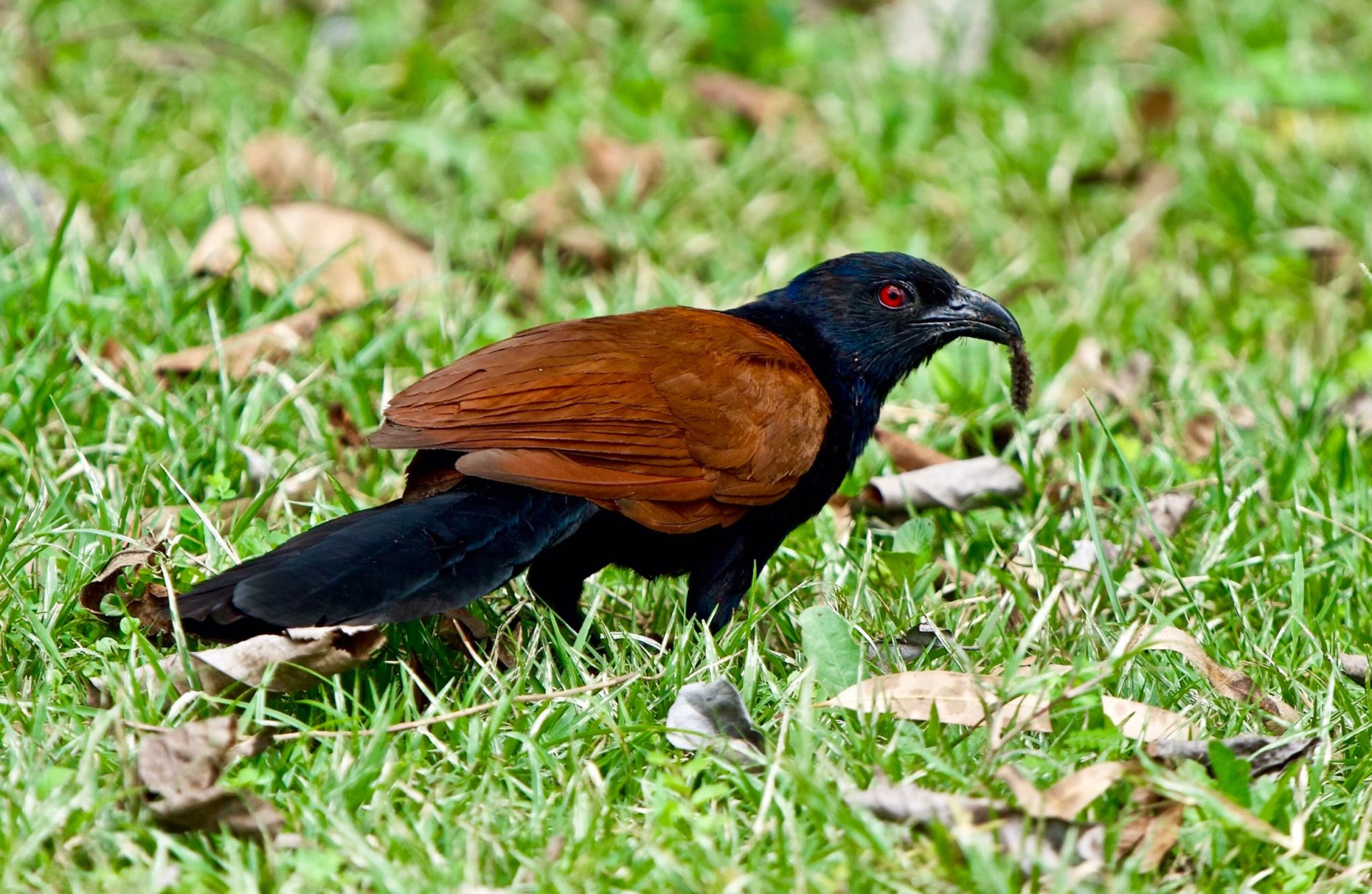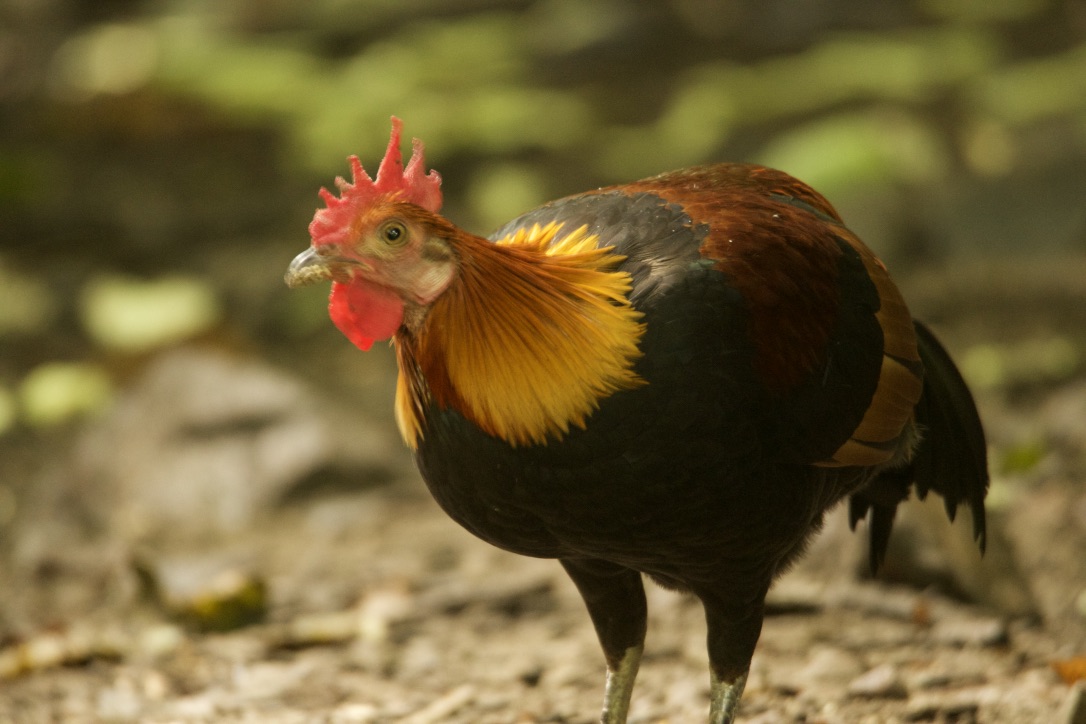Dicrurus paradiseus
Size: 31 – 36cm
Weight: 70 – 120g
Found: The distribution range of this species extends from the western Himalayas to the eastern Himalayas and Mishmi Hills in the foothills below 1,200 m (3,900 ft). They are found in the hills of peninsular India and the Western Ghats. Continuing into the west to the islands of Borneo and Java in the east through the mainland and islands. They inhabit a wide range of habitats, including open plains, moist deciduous forest, and mountain regions.
Description: In most of its range in Asia, this is the largest of the drongo species and is readily identifiable by the distinctive tail rackets and the crest of curled feather that begin in front of the face above the beak and along the crown to varying extents according to the subspecies. The tail with twirled rackets is distinctive and in flight it can appear as if two large bees were chasing a black bird.
Diet: Like other drongos, these feed mainly on insects but also eat fruit and visit flowering trees for nectar.
Comment: Their calls are extremely varied and include monotonously repeated whistles, metallic and nasal sounds as well as more complex notes and imitations of other birds. They begin calling from as early as 4 am in moonlight often with a metallic tunk-tunk-tunk series. They have an ability to accurately mimic alarm calls of other birds that are learnt through interactions in mixed-species flocks.





